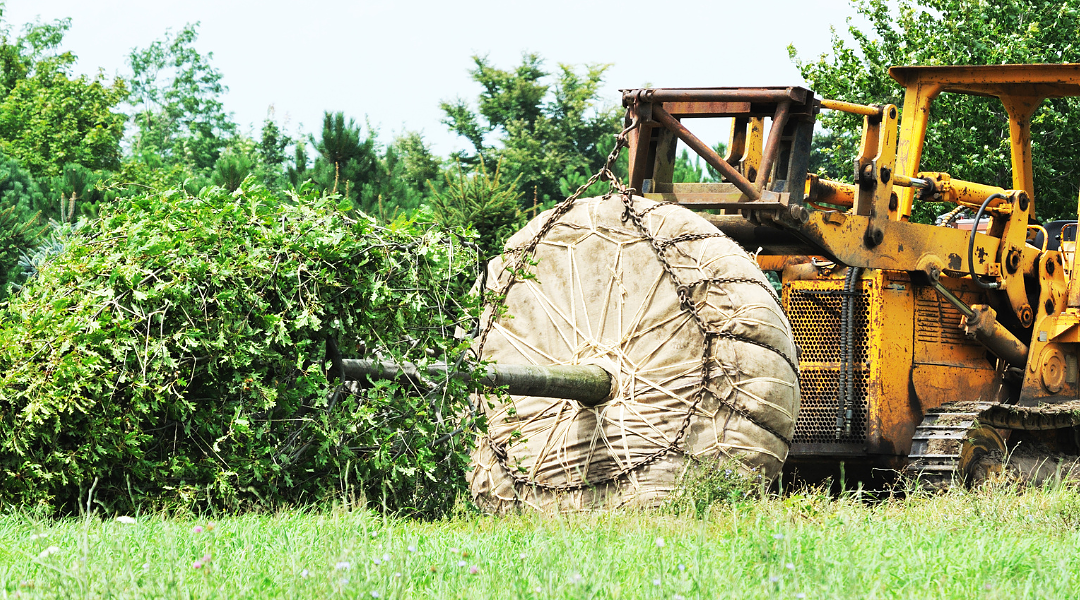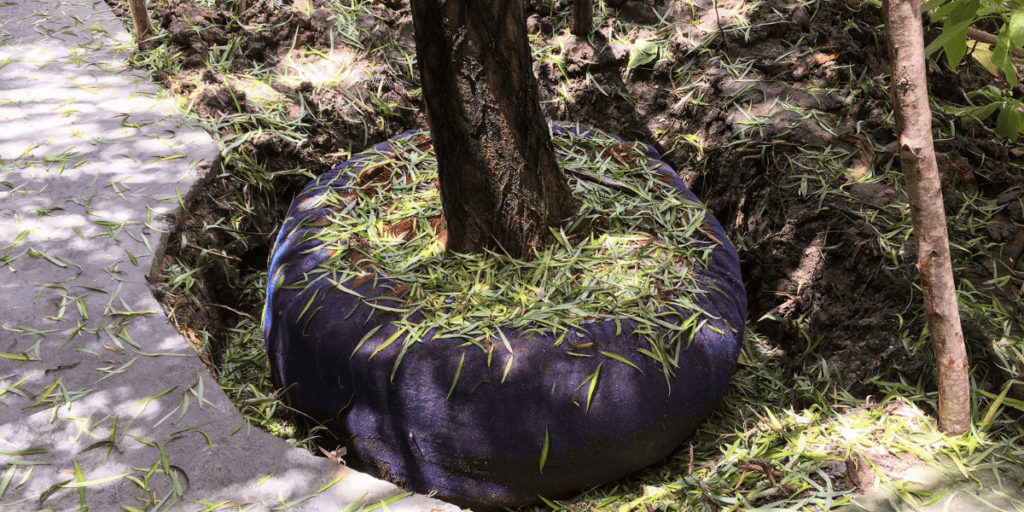Table of Contents
Rooted in Success: Proven Techniques for Tree Transplanting Excellence
Transplanting trees necessitates careful consideration of their health, suitability, and appropriate timing.
This article provides tips for successfully relocating trees by assessing their viability, selecting an optimal time for transplantation, preparing both the tree and its new location, handling and transporting it cautiously, and monitoring its progress post-transplantation.
By following these guidelines, one can ensure a successful tree relocation process.
Assess the Tree’s Health and Suitability for Transplanting
Before proceeding with the transplantation process, it is crucial to evaluate the health and suitability of the tree. This initial step ensures a healthy and viable tree is selected for relocation. The tree’s condition involves assessing its vitality, disease resistance, and structural integrity.
It is essential to check for signs of stress or decline, such as wilted leaves, dieback, or pest infestation. Additionally, checking the root system is critical in determining if the tree has a well-developed and extensive root structure capable of supporting successful transplantation. The roots should be examined for any signs of damage or girdling, which may affect their ability to establish themselves in a new location.
Choose the Right Time for Transplanting
When relocating a plant, carefully considering the appropriate timing for transplantation is crucial. The success of tree transplanting largely depends on selecting the optimal timing based on weather conditions and the tree’s growth cycle.
The best seasons for transplanting trees are typically spring and fall when temperatures are mild, and rainfall is abundant. Spring provides favorable conditions as trees begin their active growth phase, allowing them to establish roots in their new location before summer heat sets in. Fall is also suitable as trees enter a dormant state, reducing stress during transplantation.
It is essential to avoid transplanting during extreme weather conditions, such as freezing temperatures or drought periods, as these can negatively impact the survival rate of transplanted trees. By carefully considering the best seasons and optimal timing, successful tree relocation can be achieved.
Prepare the Tree and its New Location
To successfully establish a transplanted tree, it is essential to prepare the plant and its new environment adequately.
Selecting proper equipment and preparing the soil for transplantation are crucial steps. When selecting equipment, it is essential to choose tools appropriate for the size and type of tree being transplanted. This may include shovels, root-pruning tools, or transplanting bags.
Before transplantation, the soil in the new location should be prepared by loosening it with a fork or tiller. This helps improve drainage and allows the tree’s roots to penetrate easily into the soil. Removing weeds or grass from the area can also prevent competition for nutrients and water.
Handle and Transport the Tree Carefully
The careful handling and transportation of the tree is crucial for ensuring its successful relocation. Pruning techniques play a significant role in preparing the tree for transport. Before moving the tree, removing any dead or damaged branches is essential. Pruning not only reduces the weight of the tree but also prevents potential damage during transit. Additionally, pruning helps maintain a balanced canopy, which aids in preserving the overall health and vigor of the tree.
Another critical aspect of successful transplantation is soil preparation. Before uprooting, digging a wide root ball that includes an adequate amount of soil surrounding the roots is recommended. This ensures minimal disturbance to the root system during transportation and facilitates quicker establishment in its new location.
Proper handling, thoughtful pruning techniques, and appropriate soil preparation are critical factors in ensuring a successful tree relocation process.
Monitor and Maintain the Transplanted Tree
Monitoring and maintaining the transplanted tree involves regular observation of its growth and health and implementing appropriate care practices to ensure its long-term survival. To effectively monitor the transplanted tree, several techniques can be employed:
1. Visual Inspection: Regularly inspect the tree for signs of stress or disease, such as wilting leaves, discoloration, or pest infestations.
2. Soil Moisture Monitoring: Check the moisture level in the soil surrounding the tree to ensure it is adequately watered but not overwatered.
3. Pruning and Trimming: Conduct regular pruning and trimming to remove dead branches or promote healthy growth.
4. Fertilization: Provide necessary nutrients through proper fertilization methods tailored to the specific needs of the transplanted tree.
Long-term care for a transplanted tree requires consistent monitoring techniques and proactive maintenance practices. By diligently observing its growth patterns, addressing any issues promptly, and providing optimal care conditions, the chances of successful transplantation are greatly enhanced.
Frequently Asked Questions
How much does tree transplanting typically cost?
Factors influencing the cost of tree transplanting include the size and type of tree, relocation distance, accessibility, equipment needed, and labor costs. Common challenges faced during tree relocation are root damage, stress on the tree, and environmental conditions.
Are there any legal restrictions or permits required for tree transplanting?
Depending on local regulations, legal restrictions, and permits may be required for tree transplanting. These measures aim to protect the environment and ensure the process is carried out responsibly, considering the potential environmental impact.
Can any tree be successfully transplanted?
Different types of trees can be successfully transplanted by following best practices. Knowledgeable and precise techniques ensure a successful relocation process, considering factors such as root ball size, soil preparation, and proper aftercare.
How long does it usually take for a transplanted tree to establish itself in its new location?
The time it takes for a transplanted tree to establish itself in its new location can vary depending on various factors, including the species of the tree, transplanting techniques used, and environmental conditions. However, research suggests that transplanted tree survival rates are often higher when trees are moved during their dormant season in late winter or early spring.
Are there any specific techniques or equipment that should be used for handling and transporting more giant trees?
Techniques and equipment are crucial in handling and transporting more giant trees. Proper methods such as root ball wrapping, using tree spades, and securing the tree during transportation ensure successful relocation and minimize damage to the tree.


